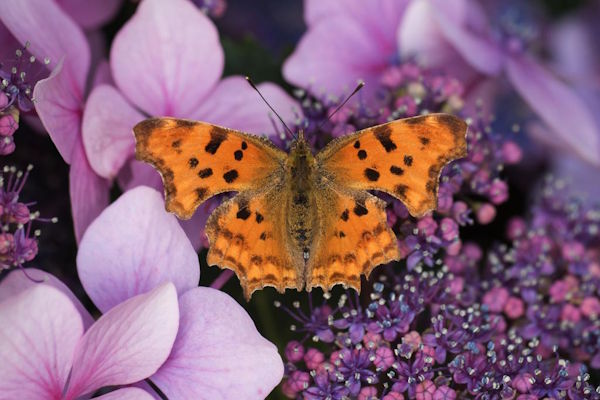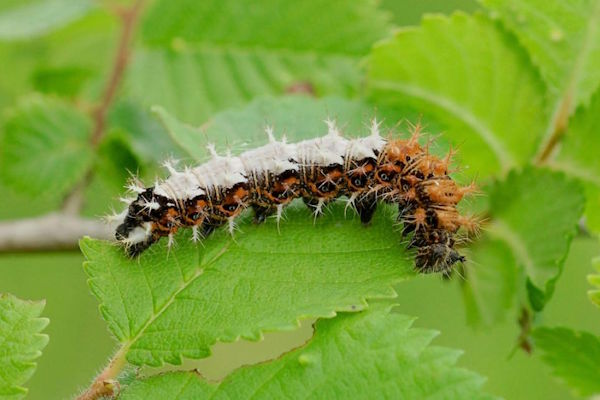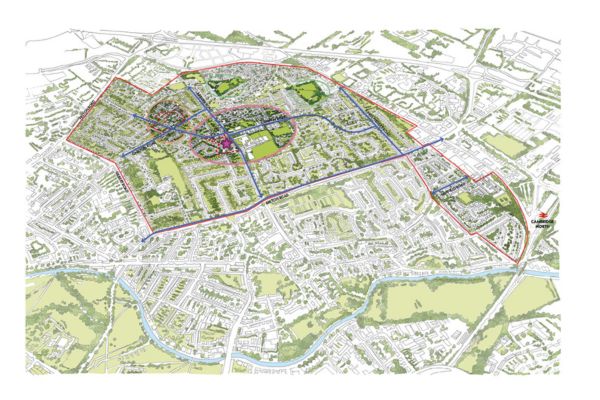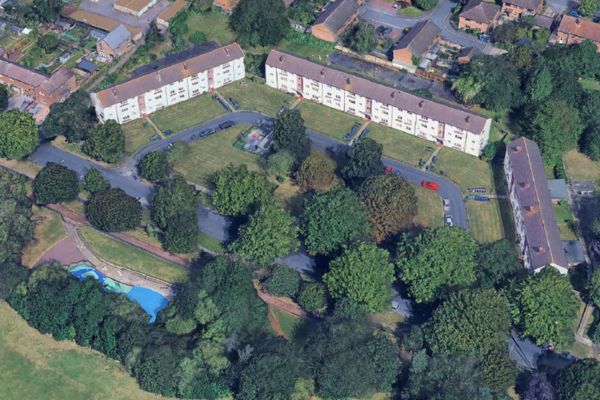This marker on the Cambridge Butterfly Trail is at Nightingale recreation ground – see the map above.
The Comma butterfly is a striking and adaptable species found across woodland edges, hedgerows and gardens from early spring right through to autumn. Its ragged wing edges and cryptic orange-brown pattern help it mimic a fallen leaf when its wings are closed, making it almost invisible to predators.
A seasonal shapeshifter, Comma caterpillars may develop into butterflies that emerge quickly in summer or delay maturity to overwinter as adults.
The caterpillars sport brown and white flecks that resemble bird droppings, an effective camouflage while feeding on nettles, elm and willow.
Once in steep decline, the Comma has made a notable comeback, expanding northwards in recent decades, partly in response to global warming.
This clever survivor demonstrates that resilience and camouflage go hand in hand in our changing British landscapes.
For more information, please visit Butterfly Conservation’s page on this species – Comma.





